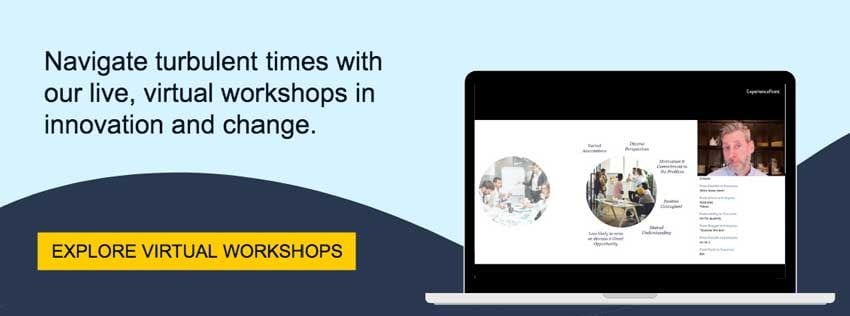In today’s lightning-fast world of business, success favors leaders who choose to democratize innovation. That is, leaders who welcome more people into the problem-solving process and, as a result, reap the benefits of the creativity and perspectives each brings to the table.
Yet, a leader’s path to building a widespread culture of innovation is not always smoothly paved. Fostering an environment wherein organizational innovation and the ability to change and act on the new ideas are second-nature instincts, can be an endeavor fraught with potholes and speed bumps.
So what makes the difference between a smooth and successful company-wide adoption of innovation capability, and another such endeavor that ultimately breaks down? By studying a number of different organizations that have succeeded in their efforts to build a culture of innovation, we came up with some common patterns and waypoints familiar to their transformation journeys.
From this research we drew the following key questions that any leader hoping to foster a culture of innovation should ask, and further explored how the most successful companies went about answering them.
(Note: It’s important to remember that the successful organizations we studied tended to tackle these key waypoints, as represented by our four key questions, in the specific order below):
How do we begin to make innovation a priority?
We observed two key ways that organizations have successfully kicked off the building of a culture of innovation. The first has been through a top-down strategy, where a senior leader has declared innovation to be a strategic imperative, and the second has been a bottom-up approach wherein a pocket of the organization has embraced human-centered approaches to innovation which then trickled outward to the rest of the company.
In either situation, aligned executive support with dedicated people and money were critical for laying a foundation to fuel the rest of the journey. Doing so meant demonstrating impact with real project work and Introducing the power of the human-centered method through workshops and events.
How do we build support for innovation?
With most leaders aligned around the importance of innovation at this stage in the transformation journey, the most successful organization sought to generate demand and incentivize these new ways of working by demonstrating results.
In addition to nurturing the energies of early adopters and creating success stories, leaders moved to engage teams in safe, meaningful projects, which offered another benefit: It revealed existing forces within their culture that could help further the adoption of these new innovation methods — as well as those that might get in the way.
A great deal of organizational learning occurred at this stage, and from those discoveries, each firm’s unique approach to innovation began to shape.
How do we scale innovation?
At this stage of the journey, leaders who successfully sparked a culture of innovation enthusiastically moved to match the strong demand.
In exploring how they could scale and spread these new ways of working, they invested in developing people through training (delivered by internal and/or external resources) and providing support for ongoing project work. They also embedded innovation in a range of development programs, and they profiled stories and held events in virtual and physical spaces.
A few built out more permanent structures, such as centers of excellence charged with owning capability development, while the most successful organizations were careful not to build out infrastructure before demand existed.
How do we stay ahead?
Organizations that differentiated themselves with robust infrastructures designed to sustain innovation capability tended to put an inward focus on continually improving what exists today and an outward focus on exploring new ideas and promising practices.
On the path to improving and exploring innovation capability, they continuously raised the bar with increasingly strategic projects resourced with internal innovation teams, stayed sharp with workshops and events for new and existing employees and revisited the implications of changing market needs to challenge the status quo.
